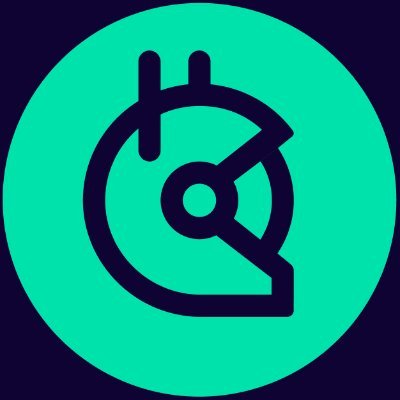Decrypting the "Sorter" concept public chain PGN supported by Gitcoin
Author: Lucky, Core Contributor of Biteye
On July 7, Gitcoin published an article introducing the Layer 2 network Public Goods Network (PGN) developed based on OP Stack. Meanwhile, on August 18, Gitcoin officially announced its 18th round of donations supporting the PGN network.
What makes this L2 so favored by Gitcoin? This article will analyze PGN from the following aspects.
1. What is a Public Good
A Public Good refers to goods that are non-excludable and non-rivalrous. The definition proposed by Toby Shorin, founder of Other Internet, is as follows:
"Anything that is neither excludable nor rivalrous, meaning that people cannot be prevented from using it, and one person's use does not reduce another person's use."
It has four main characteristics: unrestricted membership and participation, open APIs, and transparent resource and power distribution. In the traditional world, parks, power grids, libraries, etc., can all be considered Public Goods.
In the context of blockchain, Public Good projects typically refer to open-source software, open infrastructure, open standards, and projects that benefit the public.
2. Background of Public Goods Network and Problems it Solves
PGN (Public Good Network) is a Layer 2 application chain based on OP Stack, created by Gitcoin in collaboration with multiple organizations.
Since 2017, Gitcoin has been building tools that enable communities and projects to receive funding and development assistance. It has funded numerous high-quality crypto projects through 18 rounds of donation activities, deploying over $50 million for public goods projects.
PGN is currently incubated and developed by Gitcoin, with support from groups such as Protocol Guild, Public Nouns, Clr.fund, Giveth, Hypercerts, Protocol Labs, Octant, Eco, and Hedgey.
Currently, the mainstream method for raising funds for public goods on the blockchain is through Gitcoin donations. However, these donations largely rely on community enthusiasm and cannot yet serve as a stable source of funding. Therefore, Gitcoin has initiated this experimental program aimed at public goods funding, with the goal of exploring a new funding mechanism to provide a sustainable source of funding for public goods both within and outside of Ethereum.
3. Highlights of Public Goods Network
- PGN inherits the architecture of OP Stack. Every transaction in the network generates sequencer fees, and PGN will collect the vast majority of these fees generated by users' transactions on the network to fund public goods and public goods projects.
This means that any user utilizing this network is supporting the development of public goods.
(Note: A sequencer is a mechanism that collects transactions in L2 and publishes them back to the Ethereum base chain, with its revenue equal to the gas received minus the costs given to L1.)
Six months after the mainnet launch, PGN will determine its sequencer fee allocation plan for Public Goods based on data to achieve growth and funding goals for public goods. Specific governance details are still under research by PGN.
In the future, after EIP-6969 is passed, PGN will also enable Contract Secured Revenue (CSR) to meet developers' needs for sustainable income sources.
Contract Secured Revenue allows smart contract developers to claim a certain percentage of all transaction fees paid by users when interacting with the smart contract.
This means that the more dApps built on PGN, and the more users participating in these dApps, the more revenue generated for developers deploying these dApps and for public goods.
Currently, PGN plans to deploy CSR after October 2023.
4. Will Public Goods Network Airdrop?
This question remains uncertain. Currently, PGN indicates that it will explore better governance methods for PGN in 2024, with both non-tokenized and tokenized options possible.
Currently, there are not many L2s based on OP Stack that have newly issued tokens, but as an L2 with a very specific purpose and a vision that aligns well with blockchain values, it may attempt low-cost interactions.
5. How to Interact with Public Goods Network
1) Cross-Chain
First, add the network:
Network Name: PGN
RPC: https://rpc.publicgoods.network
Chain ID: 424
Currency: ETH
Explorer URL:
https://explorer.publicgoods.network/
Then open the official PGN bridging website:
https://bridge.publicgoods.network/
Enter the amount, confirm the transaction, and wait for 5-10 minutes. However, please note that currently, there is a 7-day challenge period for cross-chain transactions back.
2) Participate in Gitcoin Grants 18 Donations
This Gitcoin Grants 18 supports donations for two chains: Optimism and PGN;
For projects in the Ethereum infrastructure category, users can only donate through the PGN network.
Donation Official Website:
https://grants.gitcoin.co/
For those who need to understand the donation projects, you can check the Biteye donation project dashboard:
https://chaineye.tools/gr18
And the Biteye published “Gitcoin Grants 18 Donation Guide and Quality Project Overview”
3) Participate in Zora PGN Commemorative NFT Mint, Minting Cost Approximately 0.004 e
https://zora.co/collect/pgn:0xadfabd2a6ee264d01c534c320e5b4b06ba19fc4f/1/mint
Conclusion
According to the data released by PGN, within less than a week of its testnet launch on July 6, deposit/withdrawal transactions have already exceeded 100,000. It is believed that after this Gitcoin Grants 18 donation round, the number of interactions on its mainnet will also reach a new high.
As a well-visioned exploratory project, this reasonably structured new L2 is indeed refreshing among the various homogeneous public chains currently available. However, the development of this public chain is still in its early stages, and everyone can pay attention to it for timely interactions without FOMO.











